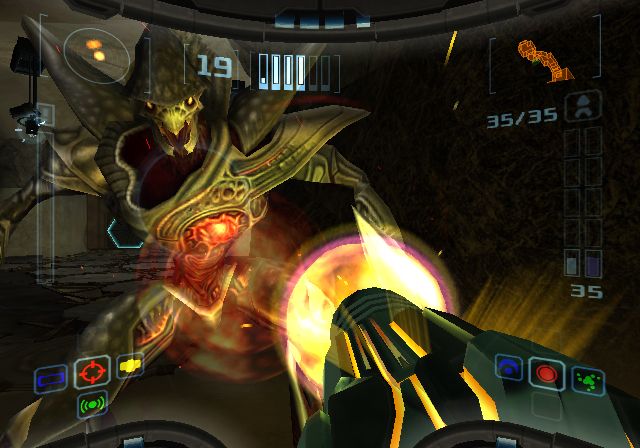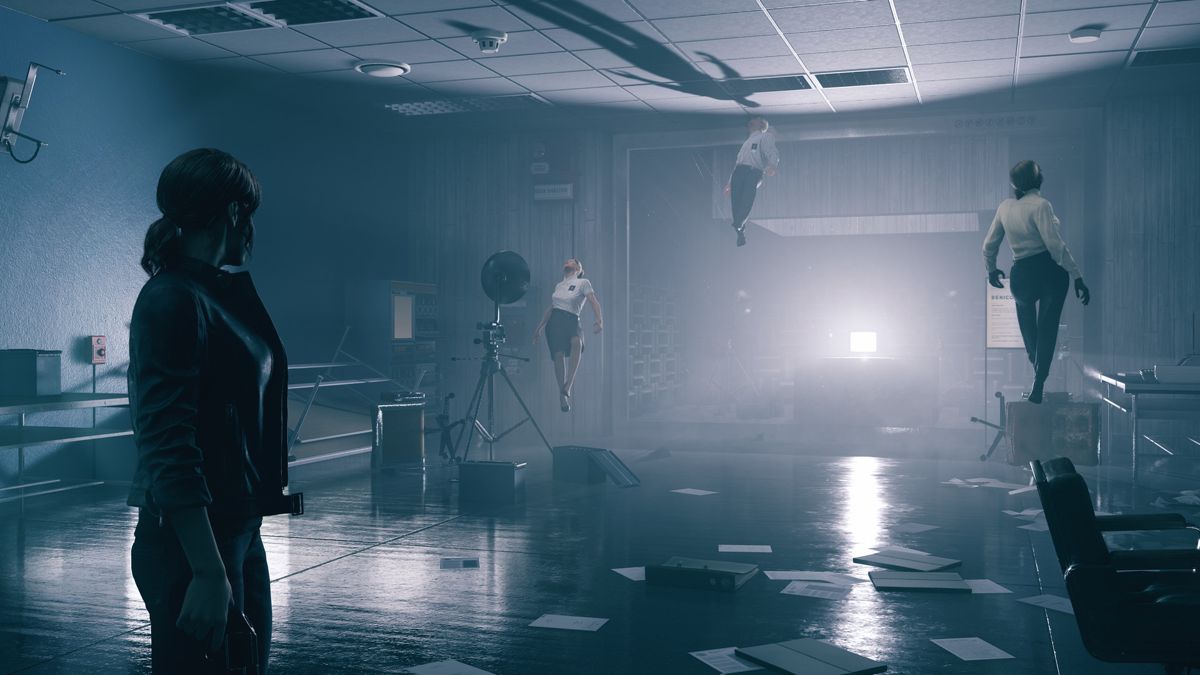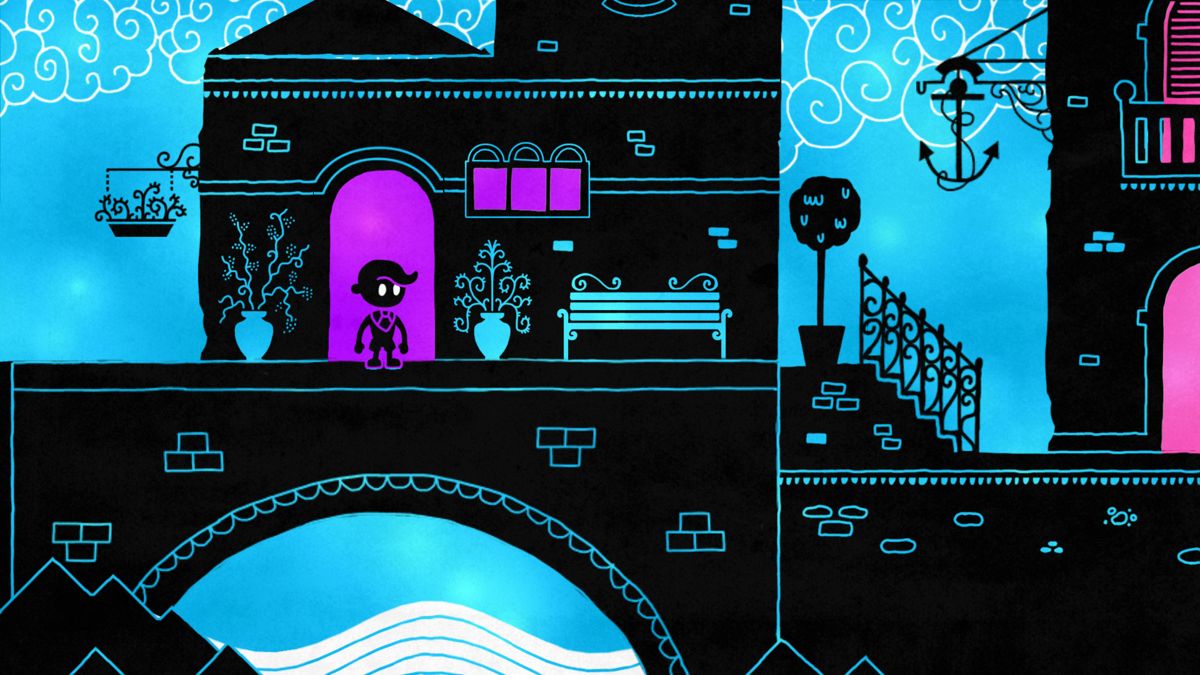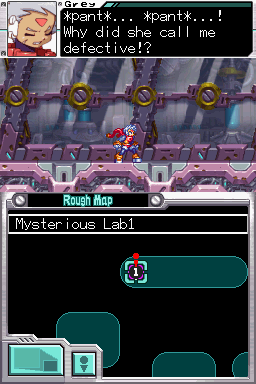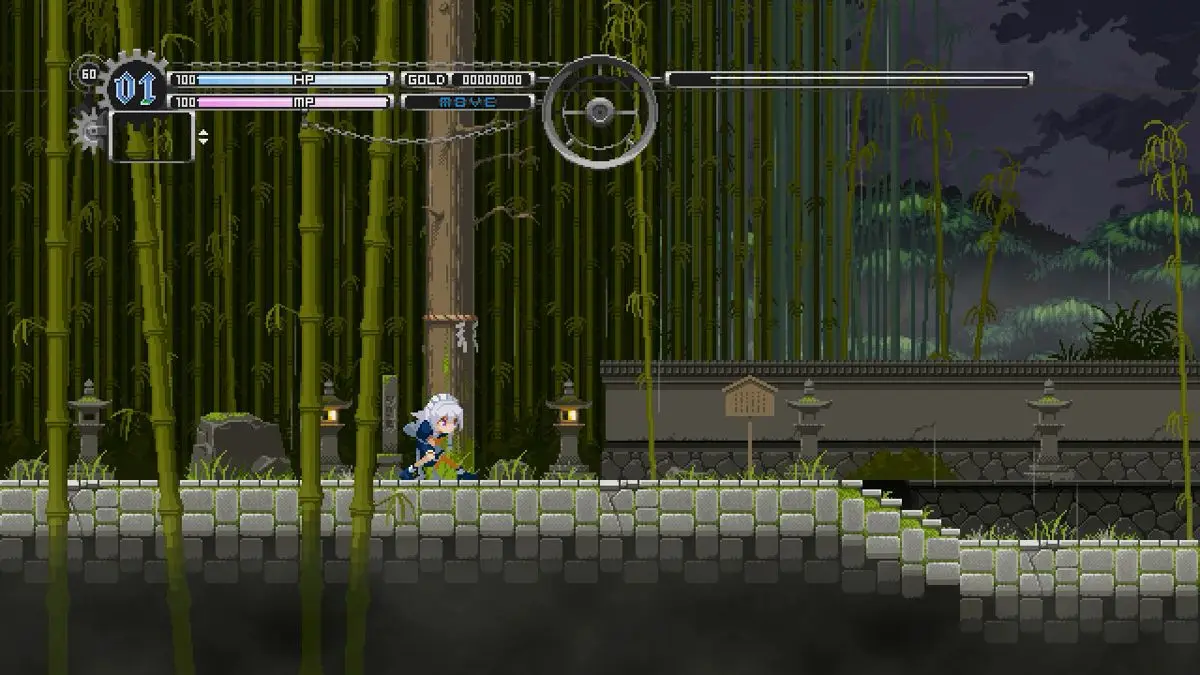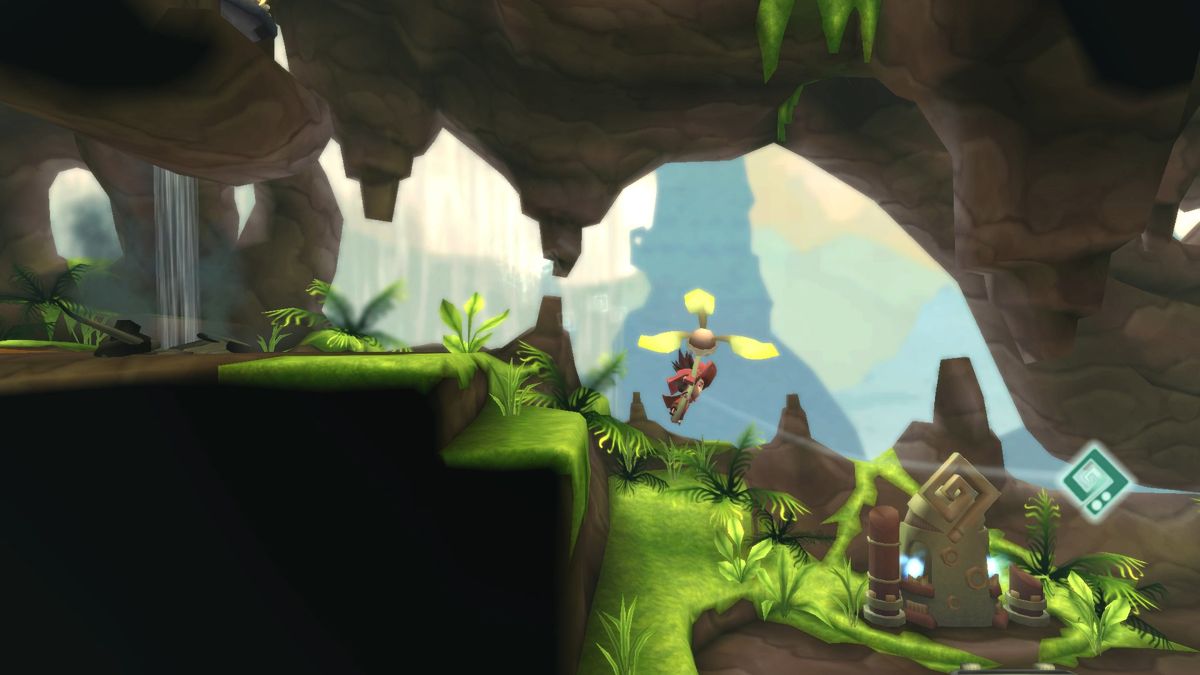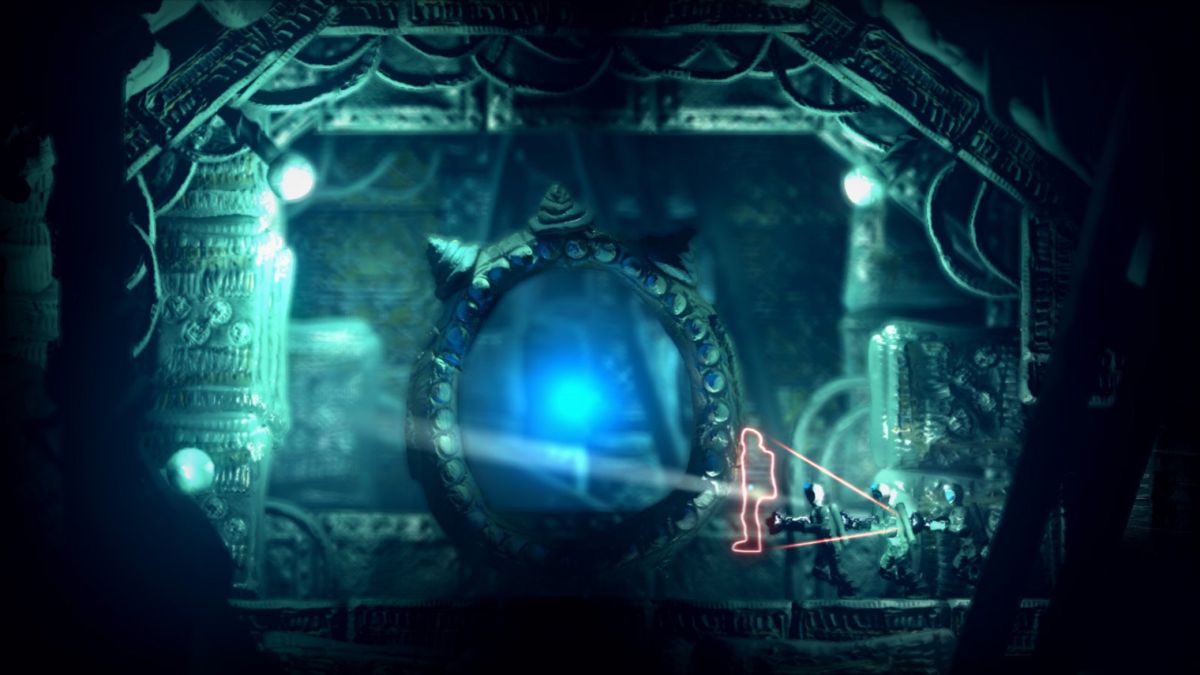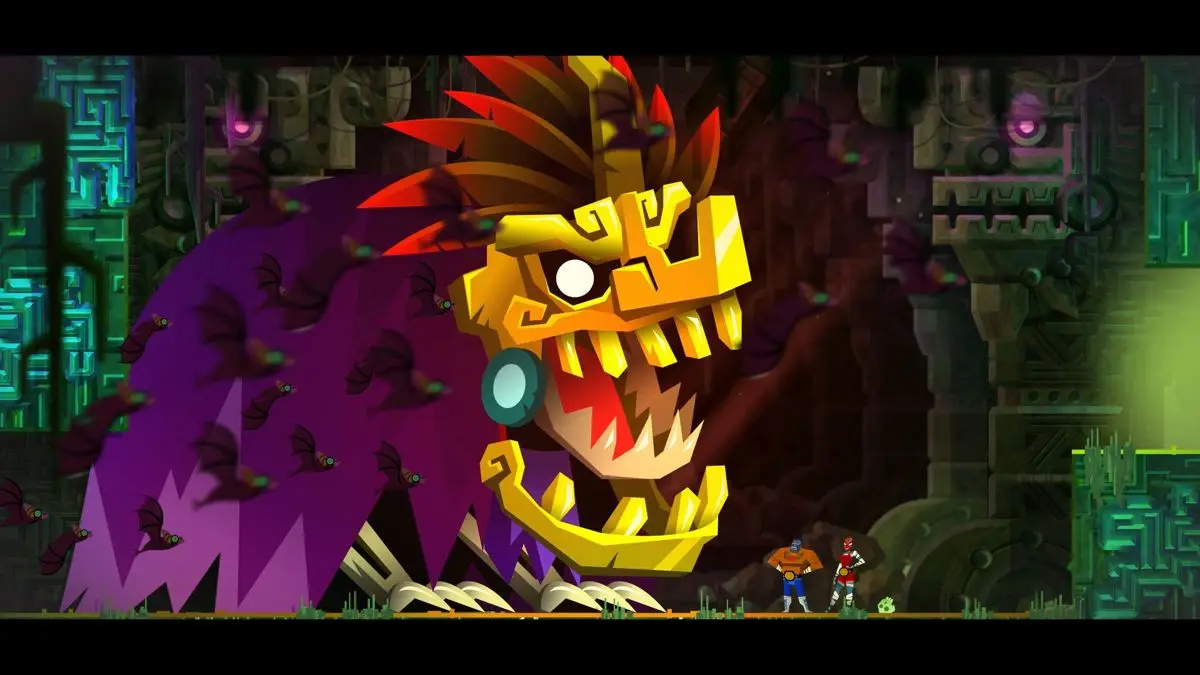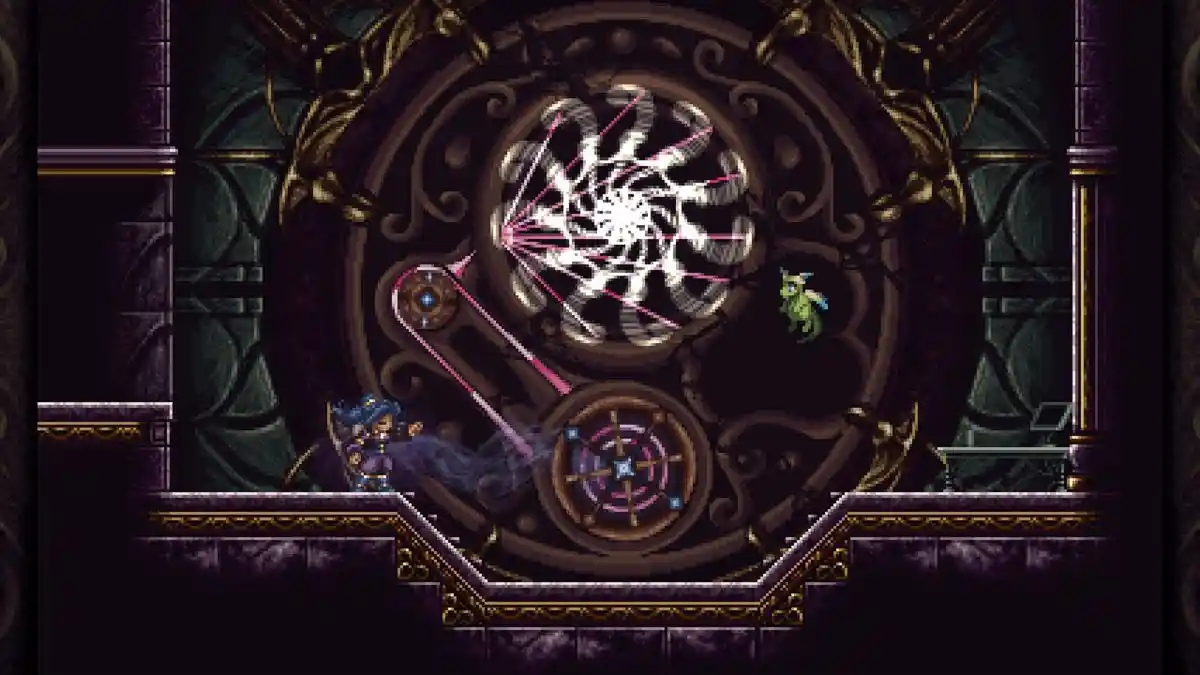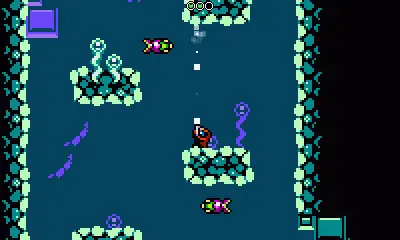Results
Metroid Prime 2: Echoes
shooter, sci-fi, challenging
Metroid Prime 2: Echoes, released in 2004 for the Nintendo GameCube, is a first-person adventure game that builds upon its predecessor while introducing several unique elements: 1. Dual-world mechanics: The game features Light and Dark versions of the planet Aether, with players switching between dimensions to solve puzzles and progress. 2. Beam system: Unlike the first Metroid Prime, beams don't stack. Instead, players must switch between four distinct beams (Power, Dark, Light, and Annihilator) for combat and puzzle-solving. 3. Ammunition: Dark and Light beams use limited ammo, adding a resource management aspect to combat. 4. Enhanced scanning: The scan visor now includes a zoom function for distant objects and provides more lore through Luminoth and Space Pirate logs. 5. Increased difficulty: Generally considered more challenging than its predecessor, with tougher bosses and environmental hazards. 6. Multiplayer mode: A first for the series, featuring deathmatch-style combat for up to four players. 7. Dark Samus: Introduces a new antagonist, a corrupted Phazon-based doppelganger of Samus. 8. Suits: Features the Dark Suit and Light Suit, which provide protection against dimensional hazards. 9. New abilities: Introduces the Screw Attack, Sonic Boom, and Echo Visor. 10. Atmosphere: Emphasizes isolation and a darker tone compared to the first Metroid Prime. The game's unique dimension-shifting mechanics and challenging gameplay make it stand out within the Metroid Prime trilogy.
Control
shooter, sci-fi, environmental puzzles
Control (2019) is a third-person action-adventure game developed by Remedy Entertainment and published by 505 Games. As a player familiar with the genre, you'll recognize its blend of supernatural elements with intense action gameplay. Key features include: 1. A metroidvania-style structure set within the shape-shifting Oldest House, headquarters of the Federal Bureau of Control. 2. Protagonist Jesse Faden's telekinetic abilities and transforming service weapon, offering varied combat options. 3. A narrative heavily influenced by the "New Weird" literary genre, drawing comparisons to the SCP Foundation and works of David Lynch. 4. Remedy's signature blend of live-action footage with in-game storytelling. 5. Ray-tracing technology showcasing impressive lighting and reflections (on supported platforms). 6. A paranormal setting that evolves the studio's previous work on games like Alan Wake and Quantum Break. The game received critical acclaim for its atmosphere, worldbuilding, and physics-based combat. It also features two story expansions: "The Foundation" and "AWE," the latter connecting Control to the Alan Wake universe. Control's unique approach to environmental storytelling and its focus on exploration alongside combat set it apart within the action-adventure genre.
Hue
environmental puzzles, varied biomes, bright visuals
Hue, developed by Fiddlesticks and released in 2016, is a puzzle-platformer that stands out with its unique color-based mechanics and artistic style. While the game's premise of guiding a character through various levels may seem straightforward, its execution and innovative use of color make it a captivating experience. The game's puzzles revolve around manipulating the background colors to reveal or obscure platforms, obstacles, and pathways. Players must strategically cycle through the available color palette to navigate the levels effectively. This mechanic introduces a fresh dimension to the platforming genre, requiring players to think creatively and adapt to the ever-changing environmental conditions. One of Hue's strengths lies in its minimalist yet evocative visual design. The game's monochromatic color scheme, coupled with its striking silhouette-based aesthetics, creates a distinctive and immersive atmosphere. The art style, reminiscent of classic hand-drawn animations, lends a sense of warmth and nostalgia to the experience. Beyond the core gameplay, Hue also incorporates narrative elements that unfold gradually throughout the journey. The game's story, while not overly complex, serves as a backdrop for the character's motivations and adds depth to the overall experience. Notably, Hue excels in its level design, which becomes increasingly complex and challenging as the game progresses. The developers have meticulously crafted each level, ensuring a perfect balance between puzzling elements and platforming challenges. As players advance, they must master the color manipulation mechanics while also honing their timing and precision. Overall, Hue stands out as a unique and refreshing addition to the puzzle-platformer genre, offering a captivating blend of innovative color-based mechanics, striking visual aesthetics, and well-designed levels. Its ability to seamlessly integrate puzzles and platforming elements makes it a rewarding experience for fans of both genres.
Mega Man ZX Advent
sci-fi, pixel art, challenging
Mega Man ZX Advent is a side-scrolling action-platformer game released for the Nintendo DS in 2007. It serves as a sequel to the 2006 game Mega Man ZX and continues the story set in the distant future of the Mega Man universe. One of the game's standout features is its expansive and interconnected world map, which allows for non-linear exploration and backtracking. Players can choose between two playable characters, Grey and Ashe, each with unique abilities and storylines that intersect at various points. The game introduces a new gameplay mechanic called the "A-Trans" system, which allows players to temporarily transform into powerful biometal forms, granting them access to different abilities and weapons. This system adds depth to combat and puzzle-solving, encouraging players to strategically switch between forms. Mega Man ZX Advent features a diverse array of challenging bosses, each with unique attack patterns and weaknesses. Defeating bosses and retrieving their biometal allows players to permanently acquire their abilities, further expanding their arsenal of skills. The game's level design is praised for its complexity and attention to detail, with intricate platforming challenges and hidden areas that reward exploration. Additionally, the game features a robust New Game+ mode, which carries over player progress and unlocks additional content, providing incentive for multiple playthroughs. Mega Man ZX Advent received critical acclaim for its impressive graphics, which pushed the technical capabilities of the Nintendo DS, and its engaging gameplay that blended traditional Mega Man elements with fresh mechanics and a compelling narrative set in the post-apocalyptic world of the ZX series.
Touhou Luna Nights
pixel art, challenging, hidden areas
Touhou Luna Nights is a metroidvania-style action platformer set in the Touhou Project universe, developed by Team Ladybug. While it retains the classic bullet hell gameplay elements found in the mainline Touhou shoot 'em up games, Luna Nights presents a fresh take on the series by offering a non-linear, exploration-focused gameplay experience. The game follows the story of Sakuya Izayoi, the head maid of the Scarlet Devil Mansion, as she embarks on a mission to investigate a mysterious disturbance in Gensokyo. Players navigate through interconnected levels, each with its own unique theme and challenges, while uncovering secrets, acquiring new abilities, and battling against a diverse array of enemies and bosses from the Touhou universe. One of the notable features of Touhou Luna Nights is its emphasis on character progression and customization. Players can level up Sakuya's stats and equip her with various artifacts and charms, allowing them to tailor her abilities to their preferred playstyle. The game also introduces a time-manipulation mechanic, which grants Sakuya the ability to slow down time and execute intricate combos and maneuvers during combat. The game's visuals pay homage to the classic Touhou aesthetics while presenting a more detailed and polished art style, with hand-drawn character sprites and vibrant environments. The soundtrack, composed by various Touhou circle artists, captures the essence of the series' iconic music while incorporating new arrangements and themes. Touhou Luna Nights offers a significant challenge for fans of the series, with intricate boss patterns and demanding platforming sections. However, it also provides accessibility options and difficulty adjustments, allowing players of varying skill levels to enjoy the experience.
LostWinds
environmental puzzles, bright visuals, double jump
LostWinds, developed by Frontier Developments and released in 2008 for the Wii, is a charming and innovative platformer that seamlessly blends traditional side-scrolling gameplay with unique wind-based mechanics. Set in the enchanting world of Mistralis, the game follows the journey of Toku, a young adventurer, and his companion, Enril the Wind Spirit. One of the game's standout features is its intuitive and immersive wind manipulation system. Players use the Wii Remote to control the wind, allowing them to influence the environment and solve puzzles in creative ways. By blowing or cycloning the wind, players can manipulate objects, reveal hidden paths, and propel Toku through the air, adding a refreshing layer of complexity to the platforming challenges. The game's visual style is a true delight, with a vibrant, hand-drawn aesthetic that brings the whimsical world of Mistralis to life. Each level is brimming with detail, from the lush, overgrown landscapes to the intricate architecture of ancient ruins. The art direction perfectly complements the game's dreamlike atmosphere, creating a sense of wonder and exploration. LostWinds also excels in its storytelling, weaving an emotionally resonant narrative that unfolds gradually throughout the adventure. The bond between Toku and Enril is a central theme, and their interactions are both heartwarming and humorous, adding depth and personality to the characters. While the game's length is relatively short, it makes up for it with a high degree of replayability. Hidden collectibles and secret areas encourage multiple playthroughs, and the game's challenging puzzles and platforming sections offer a satisfying level of difficulty for experienced gamers. Overall, LostWinds stands out as a creative and imaginative platformer that masterfully blends traditional gameplay elements with innovative wind-based mechanics. Its charming visuals, engaging storytelling, and clever puzzle design make it a must-play for fans of the genre, showcasing the Wii's unique capabilities in a delightfully whimsical way.
The Swapper
environmental puzzles, sci-fi, challenging
The Swapper, released in 2013, is a puzzle-platformer game with a distinct art style and a thought-provoking narrative. Developed by Facepalm Games, the game takes place on the Theseus, a damaged space station orbiting a remote planet. One of the game's standout features is its mind-bending mechanic, where players can create clones of themselves using a device called the Swapper. These clones can be controlled independently, allowing for intricate puzzle-solving scenarios that involve transferring consciousness between different bodies. The puzzles often require players to think outside the box and utilize the cloning mechanic in creative ways. The game's visuals are striking, with a distinctive clay-modeled art style that creates a unique and unsettling atmosphere. The Theseus station feels like a living, breathing entity, with organic elements intertwined with its machinery, adding to the sense of unease and mystery. The Swapper's narrative is delivered through environmental storytelling and scattered logs, gradually unveiling a deeper philosophical exploration of consciousness, identity, and the nature of existence. The game's themes are woven seamlessly into the gameplay, creating a cohesive and thought-provoking experience. One of the game's strengths lies in its level design, which is expertly crafted to introduce new mechanics and challenges at a steady pace. The puzzles are intricate and often require careful planning and execution, but they rarely feel frustrating or unfair. The Swapper stands out for its unique blend of mind-bending puzzles, striking visuals, and philosophical undertones. It's a game that challenges players not only with its puzzles but also with its exploration of complex themes, making it a memorable and thought-provoking experience for those who appreciate games that push the boundaries of the medium.
Guacamelee! 2
environmental puzzles, pixel art, challenging
Guacamelee! 2 is a direct sequel to the critically acclaimed metroidvania action-platformer, Guacamelee!. Developed by DrinkBox Studios, the game continues the vibrant and humorous reimagining of Mexican folklore, blending it seamlessly with the conventions of the genre. Building upon the foundations laid by its predecessor, Guacamelee! 2 introduces a significant expansion to the gameplay mechanics and world exploration. The game features a more extensive and interconnected world, with new biomes and environments to traverse, each with their own distinct visual styles and challenges. One of the standout features of Guacamelee! 2 is the introduction of multiple playable characters, each with their unique movesets and abilities. Players can switch between these characters on the fly, adding depth to the combat and puzzle-solving mechanics. This mechanic encourages players to experiment with different playstyles and strategies to overcome obstacles and engage with the game's intricate level design. The combat system has been further refined, offering a more fluid and responsive experience. New enemy types and challenging boss battles keep the action fresh and engaging, requiring players to master the game's intricate combo system and utilize their arsenal of moves effectively. Guacamelee! 2 also boasts an expanded narrative, delving deeper into the rich lore and characters introduced in the first game. The game's signature humor and charm are still very much present, with clever writing and references that pay homage to both Mexican culture and gaming tropes. Overall, Guacamelee! 2 represents an ambitious and successful evolution of the metroidvania formula, combining tight gameplay mechanics, creative level design, and a vibrant, culturally-inspired aesthetic into a memorable and engaging experience for fans of the genre.
Timespinner
igavania, pixel art, challenging
Timespinner is a metroidvania game with a focus on time-travel mechanics. Players take on the role of Lunais, a young mage who wields the power of time to unravel the mysteries of her past and confront a powerful foe. The game features an interconnected world, challenging platforming, and a deep lore-rich narrative.
Xeodrifter
sci-fi, pixel art, challenging
Xeodrifter is a metroidvania-style action-platformer developed by Renegade Kid and published by Atooi. While its core gameplay mechanics follow the familiar formula of exploring interconnected environments, acquiring new abilities to access previously inaccessible areas, and battling enemies, Xeodrifter distinguishes itself through its unique blend of retro pixel art aesthetics and modern design sensibilities. One of the game's standout features is its seamless transition between different visual styles. Xeodrifter begins with a retro-inspired 8-bit color palette and chiptune soundtrack, paying homage to classic NES games. However, as players progress and acquire new power-ups, the game's visual and audio presentation evolves, transitioning to more vibrant 16-bit and 32-bit graphics and soundtracks reminiscent of the SNES and Genesis/Mega Drive eras. Xeodrifter's level design is praised for its intricate and interconnected world, encouraging exploration and backtracking with newly acquired abilities. The game features a variety of environments, each with its own distinctive theme and challenges, ranging from underground caverns to underwater areas and alien landscapes. While the game's narrative is relatively minimalistic, it provides just enough context to drive players forward and unravel the mysteries surrounding the protagonist's journey through the hostile alien world. One aspect that sets Xeodrifter apart is its emphasis on speedrunning and replayability. The game features multiple difficulty modes, including a punishing "Insane" mode for seasoned players. Additionally, Xeodrifter incorporates a time-attack mode, where players can compete for the fastest completion times, adding an extra layer of challenge and replayability for those seeking to master the game's mechanics and level layouts. Overall, Xeodrifter offers a well-crafted and nostalgic experience for fans of the metroidvania genre, blending retro aesthetics with modern gameplay sensibilities, intricate level design, and a focus on speedrunning and replayability.
Filters
Search Term
Properties
Platforms
Tags (include)
Tags (exclude)
Get Your Game Noticed
Advertise your game with MetroidvaniaDB and reach a community of people who know exactly what they're looking for:
Your game.
Native & Banner Ad Spots
Multi-week Discounts
Game Launch Packages
Discounts for Indie Developers

